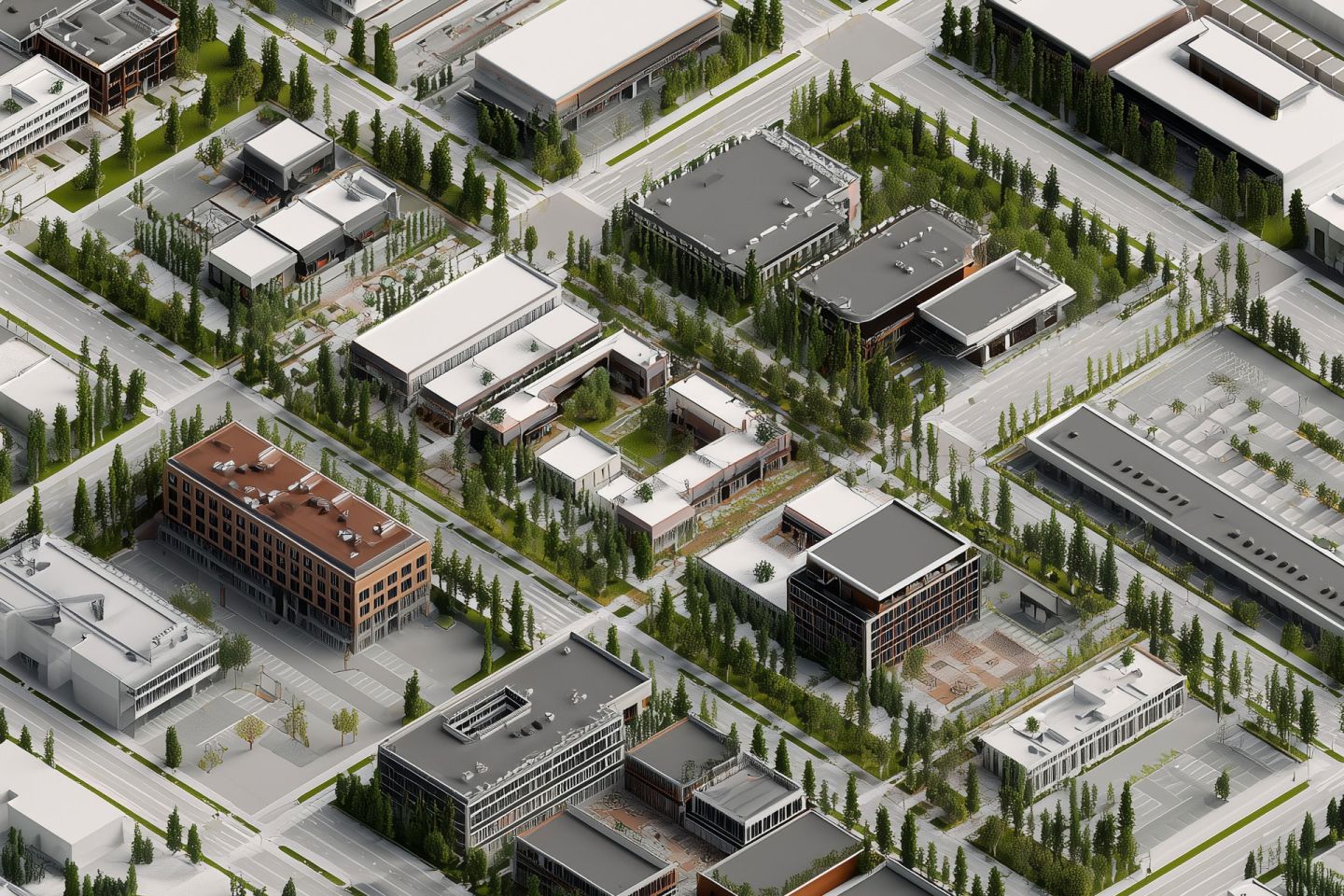Expanding a brick-and-mortar retail network is often a sign of a brand’s success. But with expansion comes risk, especially when new locations begin to erode the performance of existing ones. This phenomenon, known as location cannibalization, happens more frequently than many retailers expect and can quietly drain profitability across the store network.
At first glance, adding stores seems like a straightforward growth strategy. Yet when multiple sites start pulling from the same customer pool, they begin to compete with each other instead of increasing total market share. As customer attention and sales volume are split, the result is often disappointing—lower revenues, higher operating costs, and diminished brand impact.
This blog explores how location strategy can make or break a growth plan, why cannibalization occurs, and the tools that help forward-thinking brands avoid these setbacks. We'll also examine how location intelligence can unlock smarter and more sustainable expansion.
Why Location Matters for Brick-and-Mortar Retailers – And How Location Cannibalization Happens
For brick-and-mortar businesses, physical location remains one of the most important factors driving foot traffic, consumer engagement, and overall success. Even in the age of e-commerce, the majority of sales still occur in stores, which means that the convenience, visibility, and accessibility of a store’s location contribute to overall success. But not all growth is good growth, especially when new stores are added without considering market saturation or proximity effects.
Location cannibalization is what happens when one store begins to chip away at the customer base of another store within the same brand. This is especially common when two sites are opened too close to one another. Rather than expanding the brand’s reach, this strategy simply redistributes existing sales across two stores, without increasing total demand. The net effect? Lower performance metrics at both locations and missed opportunities elsewhere in the market.
Imagine a retail chain that opens a new storefront less than two miles from an existing high-performing location. The expectation might be increased coverage and convenience for customers, but if the two stores share the same trade area, what actually happens is sales dilution. Customers don’t suddenly shop twice as much—they choose the closer or newer store, leaving the original one underperforming. This situation is especially risky in markets with tight margins or heavy competition, where even small losses in traffic can tip the scales.
Key factors that drive location cannibalization include insufficient trade area analysis, an overreliance on real estate availability rather than customer data, miscalculations in market demand, and a lack of insight into the spatial behavior of consumers. Left unchecked, these missteps can compound over time, especially during periods of rapid expansion.
Key Factors in Preventing Location Cannibalization
Preventing location cannibalization begins with understanding your customers—how far they’re willing to travel, which factors influence their store choice, and what kinds of market overlap already exist. This is where data-driven tools like trade area analysis, potential analyses, and customer segmentation come into play.
Trade area analysis, for instance, defines the geographic boundaries from which a store draws most of its business. By analyzing where customers live, work, and travel, brands can make smarter decisions about how far apart new locations should be. The size of the trade area is heavily influenced by the market’s density and whether the brand is viewed as a unique destination or a daily convenience. Overlapping trade areas signal potential cannibalization risk, especially in urban environments where consumer behavior can be highly localized.
Trade area mapping is particularly helpful in not only helping you understand but also visualize customer draw zones. With this approach, retailers can clearly see the reach of each store and identify whether a proposed new site would serve a unique customer population or simply tap into an existing one. Pairing this with competitive landscape analysis allows brands to pinpoint not only internal threats but also nearby competitors who may already be absorbing demand.
Additionally, sales forecasting and cannibalization modeling allow decision-makers to project how a new site might impact the sales performance of surrounding stores. When these forecasts are run at scale by simulating multiple expansion scenarios, businesses can compare outcomes and choose a path that minimizes risk. The underlying models rely on a blend of historical performance data, foot traffic analysis and insights, demographic shifts, and psychographic attributes to make accurate predictions.
Strategic planning, when grounded in this type of data, shifts the focus from “where can we grow?” to “where should we grow?” That distinction is crucial for long-term success.
Related: How to Prevent Cannibalization and Maximize Your Business Potential
The Role of Site Selection Services in Retail Expansion
Retailers have more data at their fingertips than ever before but making sense of it all—and translating it into meaningful action—is a challenge. That’s where professional site selection services through a data analytics provider prove invaluable. Site selection analytics services combine quantitative and qualitative insights to help brands evaluate potential locations based on customer demand, trade area dynamics, competitive pressures, and growth potential.
Rather than simply identifying open real estate, site selection analytics experts provide tools to evaluate each location’s viability in the context of broader strategic goals. This includes reviewing factors like vehicle and foot traffic, competitive presence, proximity to helpful cotenants, demographic density, consumer behavior patterns, and psychographic fit. The outcome is a more holistic view of each site’s potential, grounded in both empirical data and real-world context.
Compared to DIY approaches that may rely on outdated assumptions or siloed datasets, the analytics provided through site selection services offer a more comprehensive and risk-aware expansion strategy. These analytics help businesses make informed, confident decisions, ensuring each new site enhances the network rather than threatening its balance.
Related:
What Technology and Tools Are Used in Site Selection?
Modern retail site selection is powered by sophisticated technologies that offer deep insights into consumer patterns and market dynamics.
Geographic Information Systems (GIS)
Geographic Information Systems (GIS), for example, allow businesses to visualize and analyze spatial data in ways that were previously impossible. With GIS, retailers can model trade areas and identify high-potential corridors—all within a visual framework that’s easy to interpret.
Predicitve Analytics
Predictive analytics plays an equally important role. By analyzing historical sales data, customer potential, and external market indicators, predictive models can estimate how a new store is likely to perform—and what impact it might have on existing stores. These forecasts are essential for mitigating cannibalization risk and identifying growth opportunities with high return potential.
Foot Traffic Data and Other Customer Insights
Foot traffic data provides ongoing visibility into how consumers engage with retail locations post-launch. This continuous feedback loop helps businesses adapt strategies based on actual customer behavior, rather than assumptions. Demographic overlays, psychographic segmentation, and behavioral data also help tailor site strategies to specific customer profiles, ensuring better alignment with market needs.
Related: What to Look for in Site Selection Software
Case Study: How Strategic Site Selection Prevented Cannibalization
A global fitness franchise, known for its heart rate-based group workouts, began its journey with just 14 locations in 2012. With ambitions to scale quickly and surpass competitor growth rates, the brand turned to Buxton to guide its expansion. But their challenge wasn’t just about adding more studios—it was about doing so strategically, without saturating existing territories or cannibalizing revenue.
To achieve this, Buxton developed a custom site scoring tool within SCOUT, Buxton’s proprietary platform. This tool helped the brand determine which markets could support their concept, how many studios each area could sustain, and the precise placement of each new location. The result was a data-driven framework that balanced growth with network integrity.
Today, that same brand operates more than 1,500 locations in 25 countries. Their ability to grow rapidly without falling into the trap of cannibalization showcases the power of thoughtful expansion rooted in analytics
Best Practices for Brick and Mortar Retailers
Retail success isn’t just about opening more stores; it’s about opening the right ones. That means planning not just for today’s opportunities, but for tomorrow’s market realities. Engaging with professional site selection analytics experts ensures that decisions are rooted in evidence, not just instinct.
Retailers should also invest in data analytic systems that allow them to monitor and respond to market shifts over time. Continuous data analysis—covering demographics, traffic trends, and consumer behavior—helps businesses stay ahead of potential cannibalization risks. It also supports better forecasting, budgeting, and resource allocation as expansion plans evolve.
Perhaps most importantly, brands must think holistically. Every new store should strengthen the network, not strain it. Prioritizing long-term network health over short-term growth creates a foundation for sustained success. Tools like Buxton’s location intelligence platform help bring this vision to life, equipping retailers with the insights they need to expand confidently and cohesively.
Related: Discover Buxton’s Site Selection Solutions
How Buxton Supports Retailers
At Buxton, we understand the balance between growth and protection. Our site selection solutions are designed to help retailers expand into new markets without compromising their existing stores. We do this by leveraging powerful location intelligence tools that factor in everything from foot traffic to competitive pressures and customer psychographics.
Our site scoring models allow decision-makers to identify viable sites with just a few clicks, while our market optimization analysis helps determine exactly how many stores each market can support. Whether you're adding one location or fifty, we help you align growth with opportunity, ensuring every new site contributes to your broader success.
Retail is evolving. And in an increasingly competitive landscape, avoiding cannibalization isn’t just smart; it’s essential. Visit our Location Intelligence solutions page to learn how Buxton can help you grow stronger, not just bigger.


